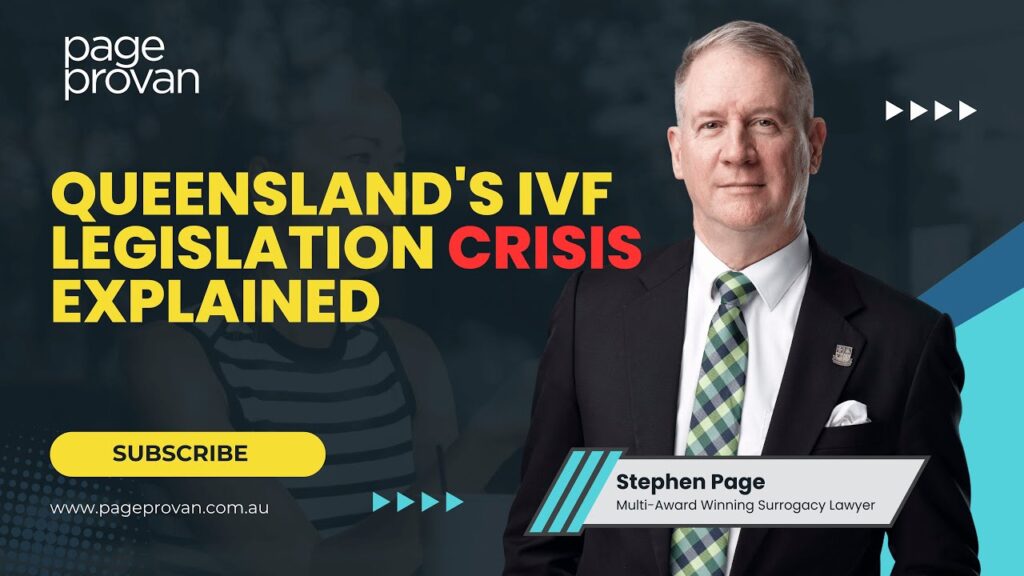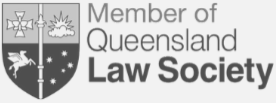Adoption and Surrogacy
In this video, Page Provan Director and award-winning surrogacy lawyer Stephen Page, discusses adoption in the context of surrogacy.
Transcript
I’m Stephen Page from Page Provan Family and Fertility Lawyers. In recent videos, I’ve been talking about adoption. I did a video about adoption in Hague Convention countries, those countries that are party to the 1993 Hague Inter-Country Adoption Convention.
Believe it or not, that’s not its full name, but that’ll do, and then we’ve got adoptions in what we call bilateral countries. Those are countries that have bilateral arrangements with Australia to facilitate adoptions, and those are two countries.
Those are South Korea, and China would say the second one isn’t a country, which, of course, is Taiwan. Then the third video was about doing adoptions in non-Hague countries. This one is slightly different, this is talking about adoption in the context of surrogacy.
So in some parts of the world, when you want to become parents through surrogacy, you’ve got to undertake an adoption, and we don’t have to look very far for that. The most obvious place to do that is right across the ditch, New Zealand.
The process of surrogacy in New Zealand involves adoption, and what I’ve discovered with a number of clients who are intended parents through surrogacy, who live in Australia but are New Zealand citizens, is they don’t want to go through the New Zealand process of adoption.
So that then gives us some technical issues. How does their child live in Australia? And in essence, if they are careful about the country that they do surrogacy in, for example, Canada or United States. Their child will therefore be a Canadian or United States citizen and will live in Australia under their visa.
So the parent will be a New Zealand citizen, and the child will be a Canadian or US citizen, but still able to live in Australia by virtue of the parent, so a bit complex. But because of the difficult process of adoption in New Zealand, they don’t want to go through the New Zealand process, and I can understand why.
Now, New Zealand is looking at reforming its laws on surrogacy, which is long overdue. We just had a general election in New Zealand, we got a new government in. I don’t know what’s happening with it.
I don’t know what time frame we’re looking at, but anyway, it’s on the agenda, and I will be doing another video, of course, about those proposed adoption changes, and surrogacy changes in New Zealand. The other way that adoption arises is if one party is recognised, but not both.
Sometimes, and just to go back to the first part of it, as I said, just not in New Zealand, but there are other places in the world where adoption occurs, as the means of surrogacy, and an example of that is Florida.
Now, Florida, generally, is, like most of the United States, pretty friendly for surrogacy purposes, and you may think that if you live for example, in Melbourne, and you do surrogacy in Florida, everything will be apples.
Because as we know, in Melbourne, there are no… In Victoria, no extra territorial laws concerning surrogacy. Great, so it appears. But when there isn’t a genetic connection, and in some other circumstances, when you’re doing surrogacy in Florida, you must do it by way of adoption.
And then this causes a big problem, because every Adoption Act in Australia, and when I say every, every state and territory has its own Adoption Act. For example, Adoption Act 2009 from Queensland, Adoption Act 2000 from New South Wales, has an offence in it, which is, well, don’t pay the parent for the child.
Pretty straightforward, and similar types, you don’t become an adoption agency and charge fees, all that stuff. But what’s critical about these laws is that they can apply overseas, they specifically say so.
If you do something here where you are paying for, in effect, the expenses relating to that child, other than those allowed expenses, you commit an offence here, even though the adoption is over there.
So if you live in Melbourne and you do surrogacy in Florida, where the process for your journey involves adoption, you may well be committing a serious criminal offence back in Victoria, and of course, the same applies throughout Australia, but I’ll just give that as an example.
The other aspect that turns up with adoption is where one of the parties is recognised as a parent by virtue of the surrogacy process, but the other is not, and that happens in one of two ways.
The first way that happens is you happen to do surrogacy in a place where only the genetic father and the surrogate are on the birth certificate. The other parent, the wife, or the husband, aren’t recognised. So we have this artificial construct that the people who are on the birth certificate aren’t the people who are really the parents.
One is, but the other is not. The surrogate has nothing to do with the child, but nevertheless, there’s this legal fiction that she’s a parent. But there she is on the birth certificate, recognised under the law of that place as a parent.
So what can be done with difficulty is that in Australia, you can do a step parent adoption, and these range with a level of difficulty. They range with a level of time. New South Wales, for example, the child has to be at least five or living with you for five years.
So you’ve got this lag time before you can do it and they’re not quick, and they are expensive, but with care and with luck, can be done, and certainly have been done on rare occasions in the past.
So that is a way of doing it and the jurisdictions we’re looking at, are when gay guys used to do surrogacy in India, or anyone did surrogacy in Malaysia, or sometimes when surrogacy has been done in Mexico, for example. In Thailand, I apologise, also in Thailand, anyone did surrogacy in Thailand.
Only the genetic father and the surrogate will be shown on the birth certificate as the parents. The other way that it arises is if you do surrogacy over there, and only one parent is automatically recognised as a parent there.
Again, typically the genetic father. And this happens, for example, in a number of American states, such as Hawaii, Minnesota, and Iowa. And in those places, how the second parent comes on to the birth certificate is by way of a second parent adoption, and we’ve got to take great care with that process in Australia.
By the adoption occurring, the second parent is a parent under the Family Law Act here, no question about it. Because the Family Law Act says that if there’s been an adoption in accordance with the law of any place, whether within or outside Australia, and therefore a parent under that adoption is a parent for the purposes of the Family Law Act.
But we’ve got to take care about how or if the 1993 Hague Inter-Country Adoption Convention applies. Typically, the State Department does not issue adoption compliance certificates for the purposes of that convention.
There’s also the issue that the child is probably not habitually resident in that country or that jurisdiction, but habitually resident here. So it’s unlikely that convention will apply.
But also we’ve got to take extreme care to make sure, depending on the process of adoption in that place, that the criminal offences under our local Adoption Acts, for example, the Adoption Act 2000 of New South Wales, are not breached. So no offence is committed here.
So if you are thinking of doing surrogacy somewhere and it involves adoption or may involve adoption, please, please get expert legal advice at this end first before you sign your surrogacy agreement.
If you have already done surrogacy in one of those places that I named, such as India, if you’re a gay guy who is in a couple relationship, or Thailand anyone, or in some cases, Mexico anyone, or Malaysia anyone, then you may well be able to do a step-parent adoption here so that both of you are recognised as the parents, not just one of you.
Thank you.












